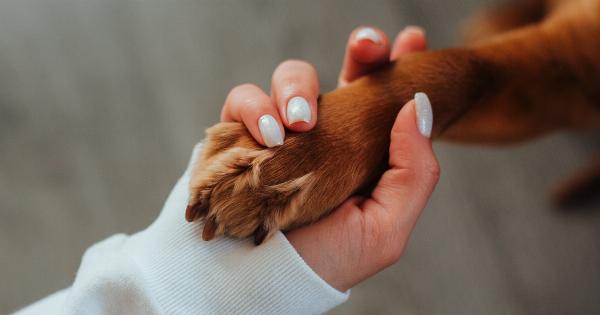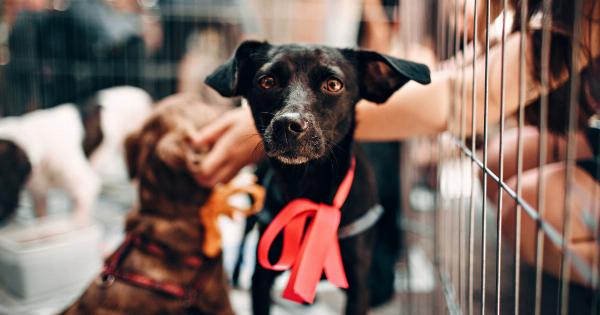As cat owners, we all want to ensure that our feline friends are healthy and happy. A crucial aspect of their well-being is their diet. However, just like humans, cats can also develop food intolerances or allergies.
It is essential as cat owners to be aware of the symptoms of cat food intolerance and the appropriate treatment options available. In this article, we will discuss how to recognize cat food intolerance, list common symptoms, and explore the various treatment approaches to help your furry companion lead a comfortable life.
The Difference between Food Allergy and Food Intolerance
Before diving into the symptoms and treatments of cat food intolerance, it’s important to distinguish between food allergies and intolerances. While they may seem similar, they have different underlying causes and can be managed differently.
A food allergy is an immune system response triggered by specific proteins present in cat food. It is an exaggerated and abnormal response that causes the immune system to produce antibodies, leading to the release of histamines and other chemicals.
Food allergies in cats are relatively rare, accounting for around 10% of all allergies in felines.
On the other hand, food intolerance does not involve the immune system. It occurs when a cat’s digestive system poorly digests or absorbs certain food components. Common culprits include lactose, gluten, or specific proteins.
Unlike food allergies, food intolerances are more prevalent in cats, making up a significant proportion of digestive issues reported.
Recognizing Symptoms of Cat Food Intolerance
Cat food intolerance can manifest in various ways. It’s important to be observant of any changes in your cat’s behavior, appearance, or health, as this can help you identify potential food intolerance issues.
Here are common symptoms to be aware of:.
1. Gastrointestinal Upset
One of the most common signs of cat food intolerance is gastrointestinal upset. This can include symptoms such as vomiting, diarrhea, frequent flatulence, and bloating.
If your cat frequently experiences these symptoms after consuming certain foods, it might be an indication of food intolerance.
2. Skin Issues
Cat food intolerances can also manifest as skin problems. Look out for excessive scratching, itchiness, hair loss, or the presence of skin rashes. Cats may develop red, inflamed skin, especially around the ears, face, and paws.
3. Ear Infections
Another symptom of food intolerance in cats is recurring ear infections. If your cat frequently suffers from ear infections, it could be related to their diet.
The inflammation caused by food intolerance can affect the ear canals and lead to persistent infections.
4. Poor Coat Condition
If your cat’s coat appears dull, dry, or lacks luster, it could be due to food intolerance. A healthy coat is a reflection of good internal health.
However, when a cat’s digestive system is unable to tolerate certain foods, it can negatively impact their coat condition.
5. Weight Loss or Poor Weight Gain
Cats with food intolerances may also exhibit unexplained weight loss or inadequate weight gain.
If your cat has a decreased appetite, feels lethargic, or displays a lack of interest in food, it’s important to investigate whether food intolerance is the underlying cause.
Diagnosing Cat Food Intolerance
If you suspect that your cat may have a food intolerance, it is recommended to consult with a veterinarian. They will conduct a thorough examination of your cat’s medical history and may prescribe certain diagnostic tests. These can include:.
1. Elimination Diet
An elimination diet involves removing certain ingredients from your cat’s diet and then reintroducing them gradually to observe any adverse reactions. This method helps identify the specific food components causing intolerance.
2. Blood Tests
In some cases, blood tests may be conducted to measure certain antibodies or detect immune responses related to food allergies or intolerances.
While blood tests can be helpful in diagnosing food allergies, they may not be as accurate for identifying intolerances.
3. Stool Analysis
A stool analysis can provide insights into the digestive health of your cat. It can help identify any indicators of malabsorption or other gastrointestinal issues that may be linked to food intolerance.
Managing and Treating Cat Food Intolerance
Once a diagnosis of food intolerance is confirmed, the most effective treatment approach is to eliminate the problematic food components from your cat’s diet. Here are a few strategies to manage cat food intolerance:.
1. Switching to a Hypoallergenic Diet
A hypoallergenic diet consists of novel protein sources and easily-digestible carbohydrates that are less likely to trigger an allergic reaction or intolerance.
These specialized diets are formulated for cats with specific dietary needs, and your veterinarian can recommend suitable options.
2. Avoiding Common Allergy Culprits
Identifying and avoiding common allergens can significantly improve your cat’s condition. Some common culprits include dairy products, grains, artificial additives, and specific proteins like beef or chicken.
Carefully read food labels and opt for brands that avoid these ingredients.
3. Gradual Transition to New Diet
When switching your cat’s diet, it’s essential to introduce the new food gradually. Abrupt changes can lead to digestive upset.
Gradually mix the new food with the old one over a period of 7-10 days, slowly increasing the proportion of the new food.
4. Prescription Medication
In severe cases where symptoms persist despite dietary changes, your veterinarian may prescribe medications to manage specific symptoms or provide relief.
These can include anti-inflammatory drugs, probiotics to support gut health, or medications to control itching and allergies.
Preventing Cat Food Intolerance
Prevention is always better than cure. While it may not be possible to prevent all cases of cat food intolerance, there are steps you can take to minimize the risk or severity of this condition:.
1. High-Quality, Balanced Diet
Feed your cat a high-quality, balanced diet that meets their nutritional needs. Opt for reputable cat food brands that use quality ingredients and have a good track record.
Look for options specifically formulated for your cat’s age, breed, and overall health.
2. Limited Ingredient Diets
If your cat has a history of food intolerances or allergies, consider limited ingredient diets. These diets contain a smaller number of ingredients, reducing the chances of triggering a reaction.
Your veterinarian can recommend suitable options based on your cat’s specific needs.
3. Avoiding Table Scraps
It’s tempting to share human food with our feline companions, but many human foods can be dangerous or difficult for cats to digest. Avoid giving your cat table scraps or any food that is not specifically formulated for their dietary needs.
4. Regular Veterinary Check-ups
Regular check-ups with your veterinarian can help identify and address any potential health issues early on, including food intolerances.
Routine examinations, blood tests, and discussions about your cat’s diet can contribute to their overall well-being.
Conclusion
Recognizing the symptoms of cat food intolerance and seeking appropriate treatment is crucial for the long-term health and happiness of your cat.
By being observant of any changes in behavior, skin condition, or gastrointestinal upset, you can help identify potential food intolerance issues and take the necessary steps to manage them. If you suspect your cat has a food intolerance, consult with your veterinarian for a comprehensive diagnosis and guidance on suitable dietary changes.
With proper care and attention, your beloved feline companion can live a comfortable life free from the discomfort of food intolerance.





























